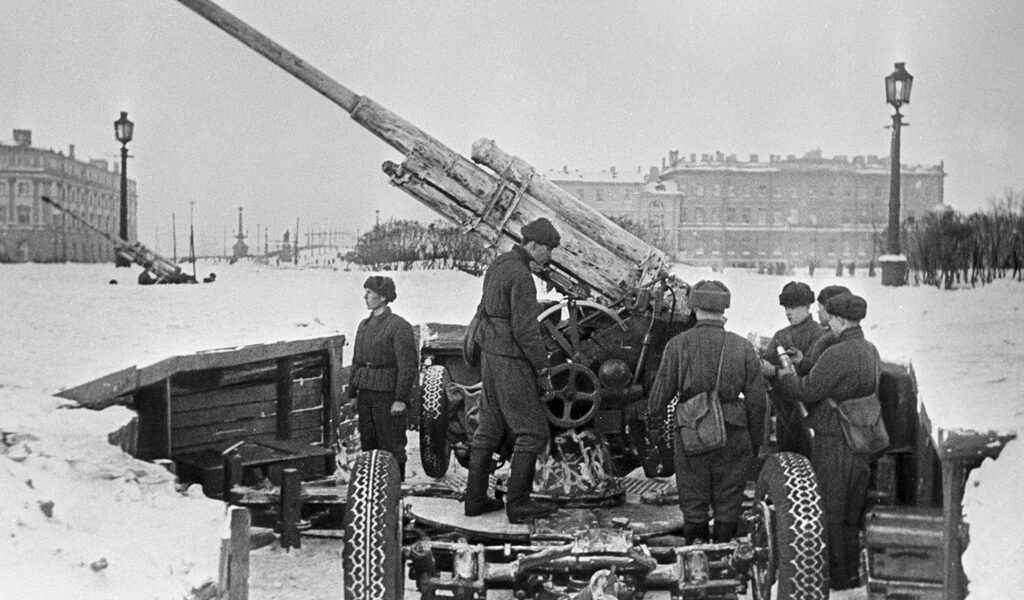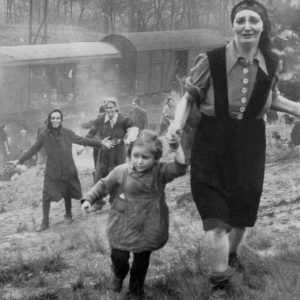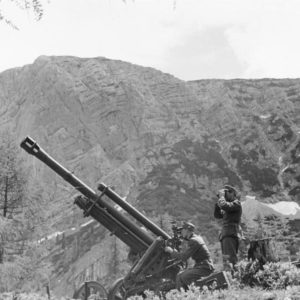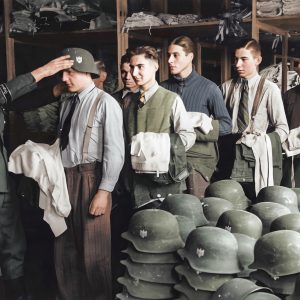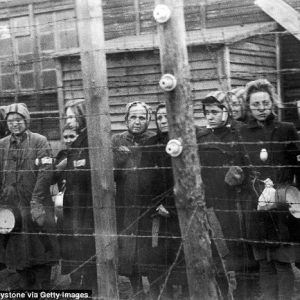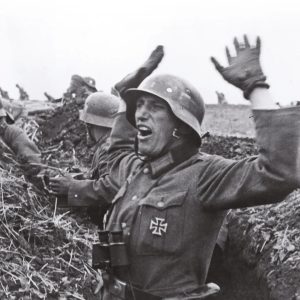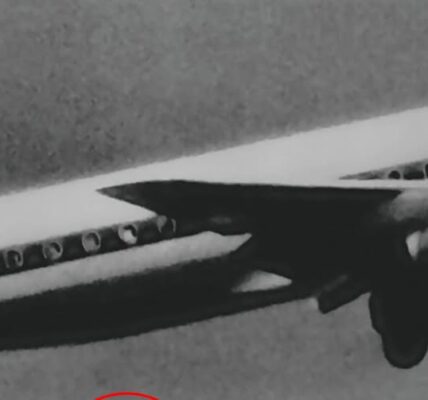
To counter the helicopters and planes of both current and anticipated enemies, the Soviet military planners of the Cold War built their air defense forces around three principles – mobility, mass, and integration.
Integration was achieved by incorporating the weapons into units at all levels. Mass was achieved by building vast numbers of them. And mobility was achieved by installing them on vehicles, creating a wide range of self-propelled anti-aircraft weapons.
BTR-40A
This was one of two early specialist anti-aircraft vehicles built by mounting weapons on armored personnel carriers (APCs). The BTR-40A was an adaptation of the BTR-40 APC, with a simple turret installed above the troop compartment. A pair of 14.5mm KPV machine guns were mounted in the turret, which had an elevation of up to 80°.
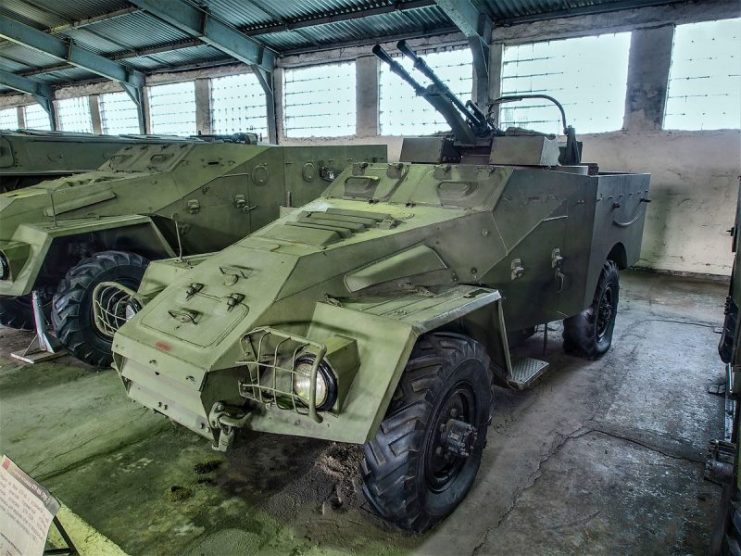
Though it could theoretically take on aircraft, the BTR-40A wasn’t very effective in this role. The manually operated turret was slow to reverse and the simple sights were ineffective. To make things worse, the gunner had little armor to protect him.
ZSU-57-2
Brought into service in 1955, the ZSU-57-2 had a chassis based on the T-54 tank, but with fewer wheels and weaker armor. It carried two air-cooled 57mm S-68 guns. These were mounted in an open-top turret that left the gunner vulnerable to fire from above, with only a tarpaulin over his head to keep out rain and snow.
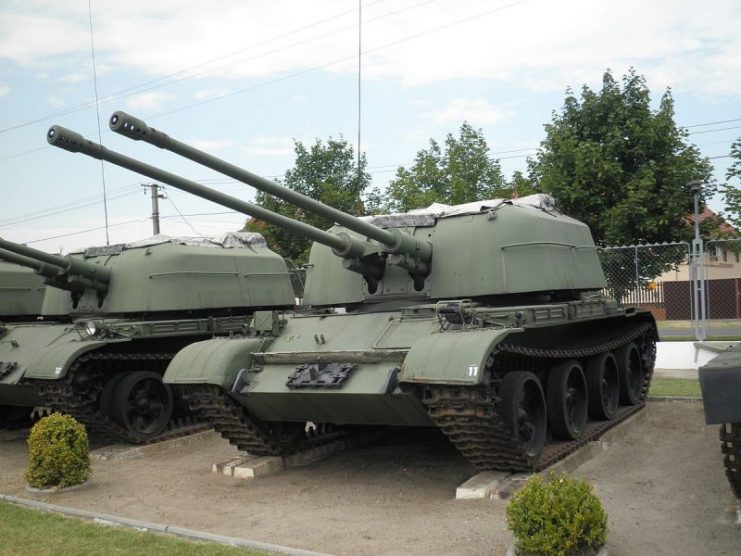
However, it did have three significant improvements over previous air defense vehicles. Firstly, its powered turret led to faster traverse and elevation, giving the gun more chance of keeping up with its targets. Secondly, more advanced optical sights, later fitted with a rangefinder, gave a better chance of accurately targeting an enemy. Thirdly, its range was twice that of the BTR-40A.
Still, this vehicle had its limits. A lack of radar made it useful only in clear weather.
ZSU-23-4 Crash
In 1964, the ZSU-57-2 was replaced by the far more effective ZSU-23-4. Like so many self-propelled anti-air vehicles, this was based on the chassis of another vehicle – the ASU-85 anti-tank gun. Unlike its predecessor, it had a fully enclosed turret as well as nuclear, biological and chemical (NBC) protection for its crew. Infra-red equipment let it operate effectively at night.
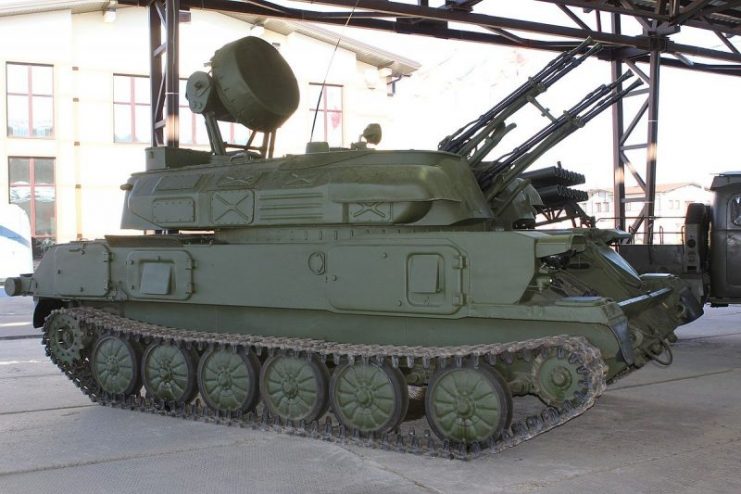
This vehicle had four water-cooled 2A7 23mm guns. These gave it a shorter range but higher rate of fire, increasing the chances of hitting a target. A computer-operated Gun Dish radar improved its ability to find and track targets regardless of the weather.
The vacuum tubes in the analog fire-control computer caused some problems for the crew, as they generated lots of heat. An improved version released in 1966 had better ventilation, reducing the problems with overheating. Later models provided both better computers and better cooling.
SA-4 Ganef
The Soviet Army had been one of the first to fully embrace the potential of rocketry. In 1965, the SA-4 Ganef became its first self-propelled weapon to make use of this in air defense, carrying an elevated turntable loaded with two missiles. It had no onboard fire control, instead relying on a radio link to a radar vehicle to line up a shot before the missiles took over with semi-active radar homing.
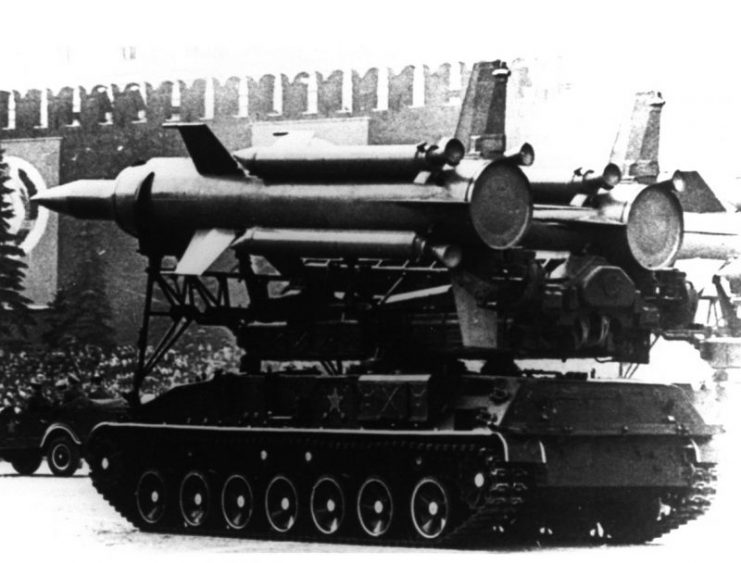
With a maximum range of 55km and a 135kg high explosive warhead, these missiles seriously increased the reach and impact of Soviet anti-aircraft fire.
Another version of the missiles came in later, exchanging a shorter range for better low altitude performance. These missiles were often fielded together because of their different strengths.
The SA-4 had a new chassis of its own, rather than one borrowed from other designs. It was fitted with infra-red driving lights and NBC protection, like most Soviet fighting vehicles of the mid-to-late Cold War.
A battery of SA-4s was accompanied by TZM transloader vehicles carrying spare missiles and cranes to load them. It took 10-15 missiles to reload.
SA-8 Gecko
The SA-8 entered the Soviet army in 1970. It was the Soviets’ first self-contained surface-to-air missile system, with the tracking radar and missiles based in the same vehicle.
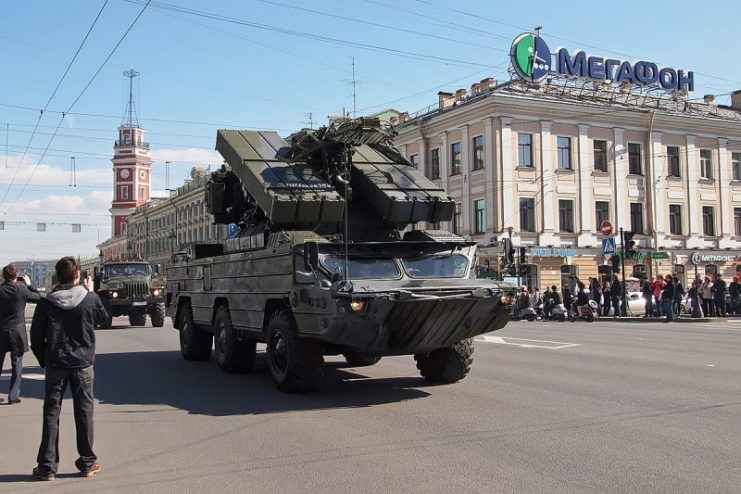
The controlling radar was mounted in the center of the vehicle. A pair of small antennae let the equipment guide two separate missiles at once. Pairs of missiles were carried on rails to each side of the radar, and the vehicle carried a total of four missiles. Reload vehicles using the same chassis carried 18 missiles each and a crane with which to load them. There were usually two reloaders for every four SA-8.
SA-13 Gopher
The SA-13 came into service in 1976, following a troubled development. Its chassis was based on the MT-LB APC, with the machine gun turret removed. A launcher lay on top of the cargo compartment, where it could be laid down flat while on the move.
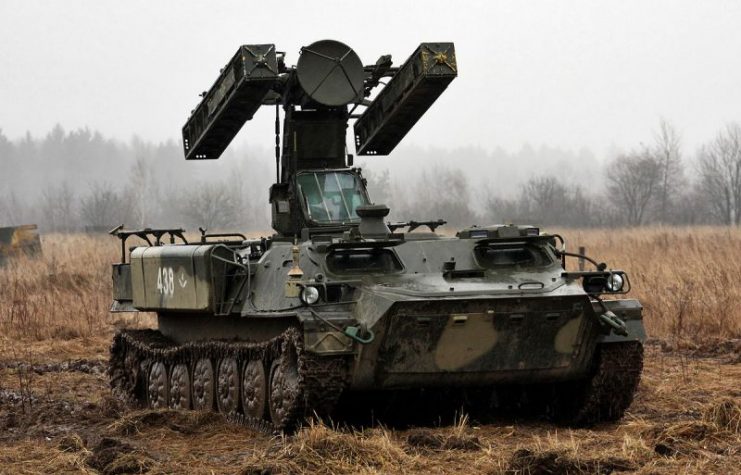
The launcher carried four 9K35 Strela-10 missiles. Another eight were stored inside the vehicle for reloading. The Strela-10 had a range of 5km and a maximum speed of nearly Mach 2. A more sophisticated missile with a heavier warhead and proximity fuse was introduced in 1981. The SA-13 could also fire the older, less sophisticated Strela-1.
The Strela-10 missiles were initially directed by a range-only Hat Box radar system, to make sure that targets could be reached. In-built infra-red heat-seeking systems within the missiles then took over.
2S6
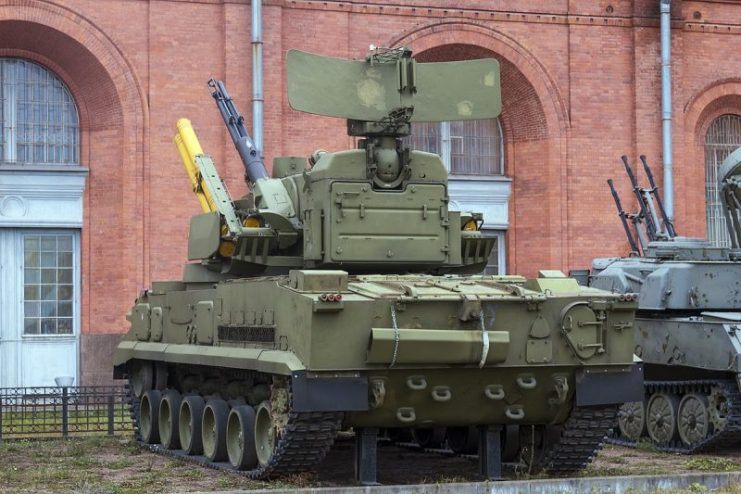
Arriving in 1982, the 2S6 combined guns with rocketry for greater firepower, carrying four SA-19 Grison missiles and a pair of 2A38 30mm cannons. Two radar systems allowed it to identify and track targets. Stabilizing equipment let the gunner fire the guns while on the move, but the missiles could only be fired when the vehicle was still. It had light armor that could keep out shell splinters and small arms fire.
The main production version of this vehicle, the 2S6M, arrived four years later. It had twice as many missiles, better missiles and guns, and superior fire control systems.
